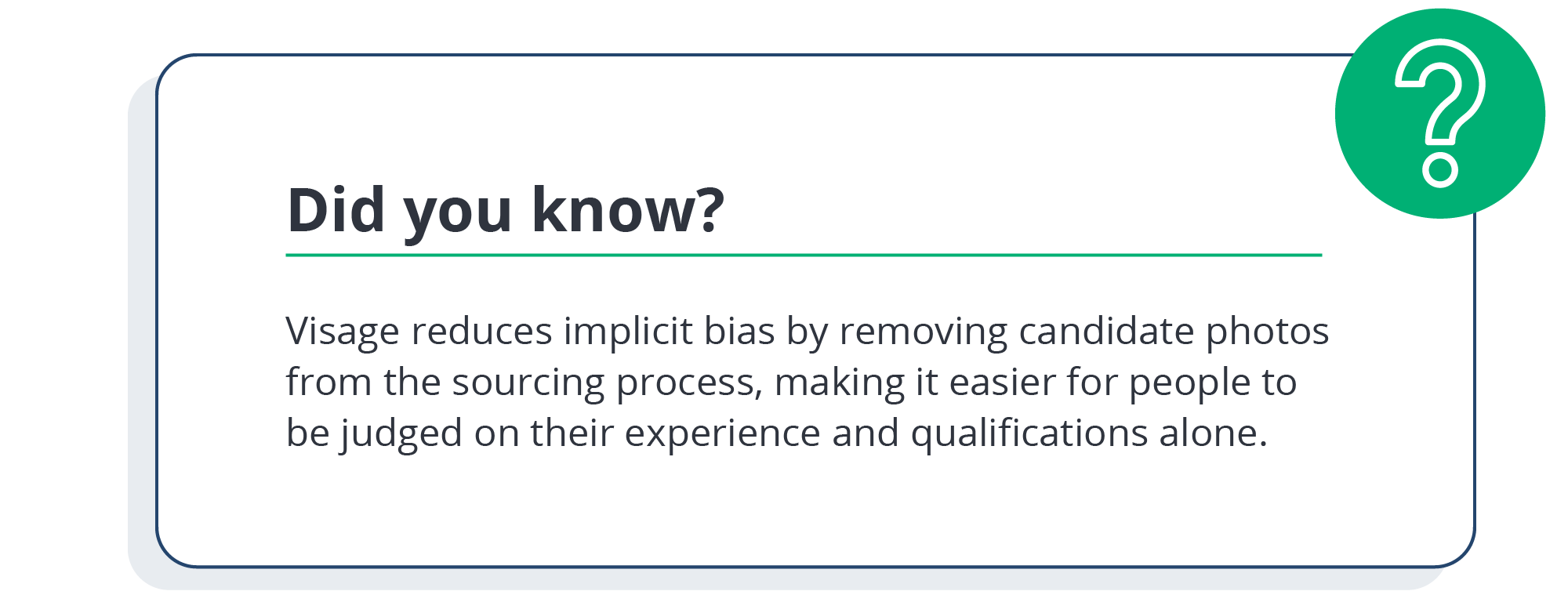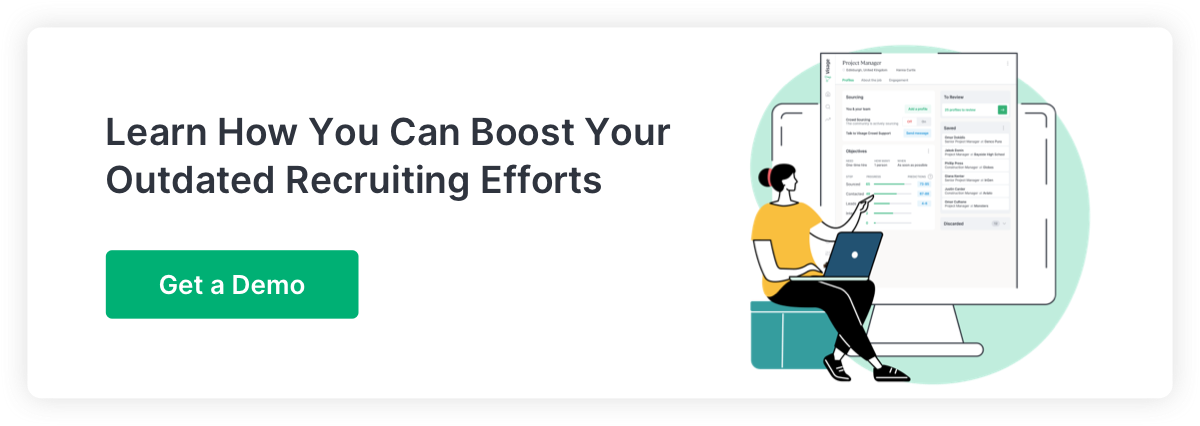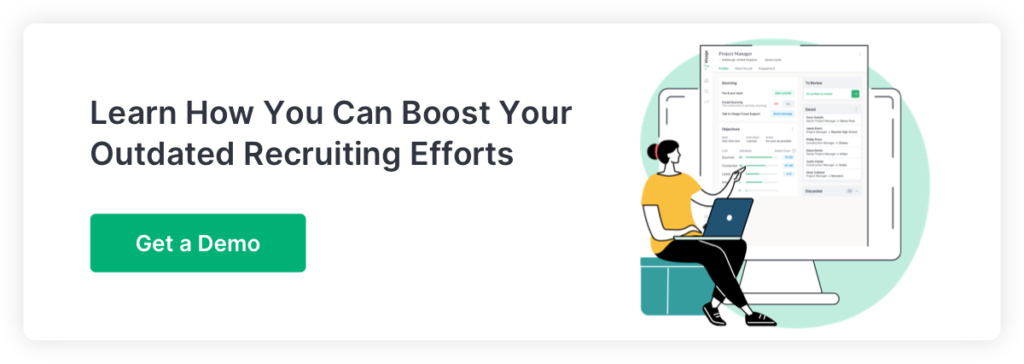Diversity matters. It’s been proven time and time again that, from backroom to boardroom, a diverse workforce offers a multitude of advantages and opportunities, like boosting innovation, productivity, financial performance, reputation, and more.
Although making the business and ethical case for diversity isn’t much of a challenge, understanding how to source diverse talent certainly is.
How To Source Diverse Talent: The Challenges
Most talent acquisition professionals are continuously looking for new ways to connect with top talent, but the age-old challenges remain. Because we’re all human, each of us comes pre-loaded with a healthy dose of unconscious bias, so we tend to recruit in our own image.
If company leadership lacks diversity, that can have a trickle-down effect. Perhaps we’ve been blind to vast pools of the talent we’re looking for, or if we do locate those pools, we simply can’t attract the individuals we need.
Don’t despair! Sourcing diverse talent effectively isn’t quite “mission impossible,” but it is definitely a mission.
The Visage Operations team has compiled a list of our six top tips for finding, reaching, and engaging the people you need to skyrocket your business success, hit those recruitment targets, and, let’s not forget, make a more diverse workplace, one overlooked candidate at a time.
“Sourcing diverse talent isn’t just about hitting those recruitment targets, it’s about making the world a better place, one candidate at a time.”
Your Diverse Talent Pipeline: Develop A Strategy
Tweaking your existing TA strategies won’t give you maximum impact. To develop a healthy, diverse talent pipeline, you’ll need to go all-in. Get proactive.
This means you need to create a specially tailored strategy to locate and attract the diverse talent you need. Here’s our take on strategic recruitment for diversity. It’s a distillation of our Strategic Recruitment Guide, which you can find here.
- Align your strategic objectives to intersect with a diverse workforce. Define what diversity means to you.
How does your current recruitment strategy align with your strategic goal of a more diverse workforce? Is your organization ready for a more diverse workforce?
- Evaluate and audit what’s good, bad, and ugly about your current TA process. Walk through it, from your target candidate’s point of view. Look at the metrics.
Where do your diverse candidates fall off the radar, if they’re even on it to start with? Get an independent assessment. Does your AI have an inbuilt bias?
Get a baseline for your current diversity metrics so you can measure progress.
- Prioritize the candidate experience: there’s no point in sourcing an amazing cohort of diverse and talented people if your pipeline is full of holes.
Make it frictionless, personal, and exciting. Personalization is key to attracting Gen Z, and you’ll need super-personalization to attract diverse Gen Z talent.
- Check your branding & reputation: What message does your branding and reputation communicate to your target candidates? Are you promoting (and living) positive diversity messages?
- Leverage technology: Automate what you can to free up your recruiters’ time for more opportunities to add a human touch. De-bias your IT.
Check Your Language
Is your language inclusive, or is it filled with coded language or assumptions that could turn off the talent you’re looking for?
For instance, terms like “aggressive” or “dominant” are often associated with masculine stereotypes and may pose a barrier to women and nonbinary talent.
Phrases like “fast-paced,” “young team,” and “work hard, play hard,” may put off older candidates and individuals who don’t buy into the “live-to-work” narrative.
Note: Even by suggesting that ‘Phrase X turns off Person Y,’ we’re still making assumptions. Plenty of 58-year-olds love fast-paced environments, just as any number of women enjoy being super-competitive, and lots of men would make ideal candidates for caregiving roles.
Start your sourcing by examining the words you use for unintentional assumptions.
Tackle Unconscious Bias With AI
As AI becomes more prevalent in talent sourcing, so legislation to govern or mitigate built-in bias has grown. Learn to love legislation, because it’s a useful guide to help you refine and improve your AI by giving you a ready-made compliance framework to work from.
Even better, effective AI can minimize implicit bias through blind recruitment. Candidate images, names, and even how resumes are presented may all contribute signals to recruiters’ unconscious biases, but you can design your AI to remove or reduce bias-inducing data and nuances. For example, Visage’s smart-sourcing software has features that help anonymize a resume by:
For example, Visage’s smart-sourcing software has features that help anonymize a resume by:
- Removing photographs
- Creating a de-biased standard resume review format
- Prioritizing the required skill-set
Broaden Your Sourcing Channels
A diverse talent pool won’t come to you, so be prepared to take a multi-channel sourcing approach. This could include:
Tapping into professional networks and job boards focused on the people you’re trying to attract.
- Exploring social media groups that serve your target candidates – but take care to account for ads – social media algorithms can often generate bias.
- Targeting career fairs for under-represented people in your industry who align with your hiring needs, e.g., women in STEM.
Build Partnerships
Create positive partnerships and relationships with organizations and people focused on creating good work and career opportunities for underrepresented people. For instance:
- Build mutually beneficial partnerships with minority-centered organizations and community groups.
- Identify and approach state, foundation, or federally funded programs that support underserved populations with education and back-to-work initiatives.
- Link to universities, colleges, and organizations that serve people who are traditionally underrepresented in your industry, like Historically Black Colleges and Universities, Inroads, or Reaching Out.
- Look at corporate partnerships with organizations such as The Consortium and partner with minority mentoring schemes.
A useful outcome of these partnerships is that the more you get to know your partners and the people they serve, the more you’ll understand what attracts the candidates you want to hire.
Building trust and strengthening relationships will help you grow a diverse talent pool that never runs dry.
Train Recruiters For Diversity
If your recruiting team is already a diverse bunch, then you’ve got a head start. They represent the people you’re trying to attract, and counterintuitively, their own implicit bias may work in your favor.
Regardless of your corporate makeup, every team can benefit from improving cultural awareness and broadening your understanding, so make a specific plan for continued professional development efforts. Keep training real and engaging instead of using checkbox exercises.
There are loads of different topics and angles to tackle, including:
- Understanding implicit bias and biased hiring preferences
- Restructuring recruitment for inclusivity and equity
- Creating diversity champions
- How to use language to reduce exclusion
Sourcing Diverse Talent At Visage: How We Helped Siemens AG
Sourcing diverse talent may pose a significant challenge, but it’s not impossible.
At Visage, diversity has always been a strategic business goal, in terms of what we do for our clients, and who we are.
With 4,000+ on-demand global talent crowdsourcers from across 65 countries, diversity really is built into our DNA, but we also provide training for diversity certified sourcers, too.
And, of course, our platform has exceptional de-biasing features, like creating parsed resumes to ensure a standardized format and skills-based matching.
We employ the same sourcing-for-diversity strategies to help our own clients. For instance, in a recent project with Siemens AG, we worked to source women for hard-to-fill tech and engineering roles. We sourced over 20,000 qualified candidates, which enabled Siemens to expand its sourcing program on a global scale.
Need a cohort of qualified hard-to-reach candidates? Get a demo now.

Director of Sourcing Operations at Visage, Evelyn has experience in agency, RPO, and in-house roles spanning 12 years in the recruitment industry. Evelyn has built and oversees a 4000-member global freelance sourcing community. Every Christmas in Ireland, she enjoys putting up her THREE Christmas trees.

